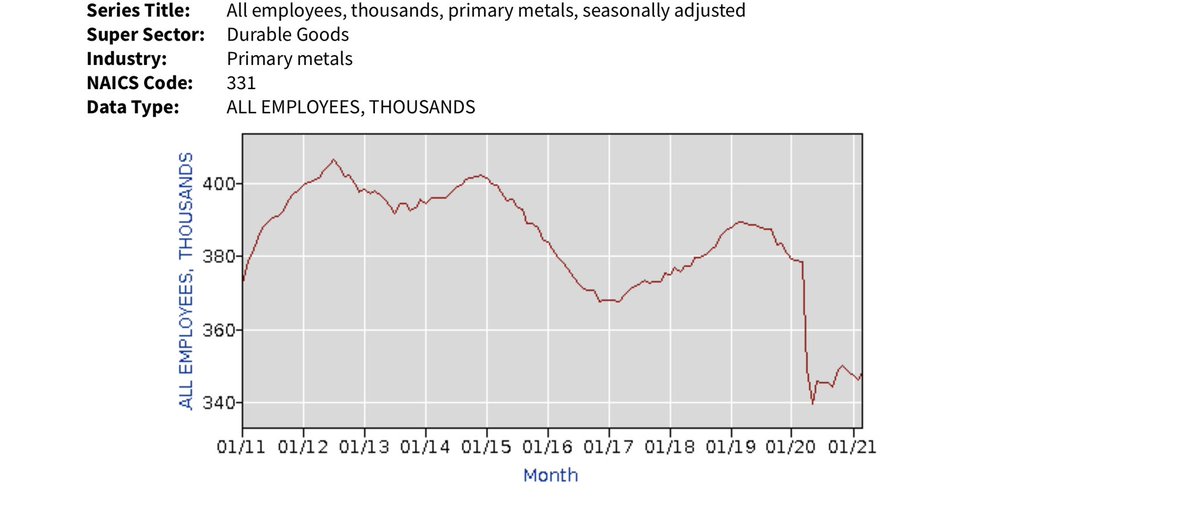
We don’t talk enough about those who fell through the cracks in this pandemic.
People like Barb Ashbrook, Ray Rand, Ralph Wyncoop and Anthony Barela.
They and 9m others didn’t get the help needed, as my @economics colleague @readep & I write for @BW:
bloomberg.com/news/features/…

People like Barb Ashbrook, Ray Rand, Ralph Wyncoop and Anthony Barela.
They and 9m others didn’t get the help needed, as my @economics colleague @readep & I write for @BW:
bloomberg.com/news/features/…


We spent months gathering data and talking to people, experts, lawyers & officials around America. It was sobering. Half the 64.3m people who applied for regular unemployment – the system left after this crisis – didn’t get benefits. That’s 2x denial rate in the Great Recession. 

Special programs rushed into existence by Congress filled part of that gap. At least 16.7m people got Pandemic Unemployment Assistance for gig workers, contractors, & others not otherwise eligible.
But millions got left out.
bloomberg.com/news/features/…
But millions got left out.
bloomberg.com/news/features/…
This is Barb Ashbrook. She cobbles together a living from part-time jobs in Indianapolis. When she lost her job as a food court cashier in a downtown building in March 2020 she sought unemployment. The problem: She made more than $121/wk at her other part-time job at Dollar Tree. 

This is Ray Rand. He’s a Las Vegas IT guy who lost his work for an RV rental firm. He finally got paid benefits June 18, 13 mths after applying. Why was it held up? He doesn’t know. He survived on food stamps, rental assistance, & stimulus payments. And stress. “It’s been hell.’’ 

We don’t have a picture of Ralph Wyncoop because he died March 17, a year after the Uber driver first applied for unemployment. For months he was denied PUA because he couldn’t provide a utility bill. Why? Because utilities were paid by his landlord, who was trying to evict him.
“I have no idea why I was denied and cannot reach anyone to clear up my problem,” Wyncoop wrote to the state labor department last fall. “By not paying me what I am entitled to under the CARES ACT, I am now homeless, bankrupt, and in declining health daily. Please Help Me.”
We thought we'd found a mistake when we discovered in the data that Nevada had only paid out one in ten claims for PUA. But officials told us that the data was correct. They blamed fraud, which is a common refrain from state officials.
Officials told us they'd identified a million fraudulent claims but wouldn't provide us more evidence than that. When we looked at the Dept of Labor data we found that Nevada had actually reported only one confirmed case of PUA fraud worth $3,108.
There’s also evidence that innocent people have been caught up in efforts to clamp down on fraud.
“They just deny, deny, deny,” says Mark Thierman, a Reno lawyer suing Nevada on behalf of gig workers denied benefits. “Their definition of fraud is they disagree with you.”
“They just deny, deny, deny,” says Mark Thierman, a Reno lawyer suing Nevada on behalf of gig workers denied benefits. “Their definition of fraud is they disagree with you.”
You hear a lot about fraud when you poke around. There’s clearly been fraud. But how much is still unclear. FWIW by the end of March states had reported paying out <$2bn on fraudulent unemployment claims to the DOL. The US has paid out >$750bn in benefits during the pandemic.
What seems far more clear is millions of people who needed help didn't get it.
Anthony Barela lost his job as an Albuquerque barber when New Mexico shut down in March 2020. He was denied PUA by the state for reasons he’s still trying to figure out.
Anthony Barela lost his job as an Albuquerque barber when New Mexico shut down in March 2020. He was denied PUA by the state for reasons he’s still trying to figure out.
Barela is typical of many of those people. He didn't wait around. By October last year he was working overnight shifts at a UPS warehouse and day shifts at The Container Store.
He’s moved on with his life. He's back working for $10.50/hour as a barber. But not getting benefits had very real economic consequences for him...
Why does this matter as US recovers? The system left behind for the next crisis just hasn’t kept up with economic change & that has consequences.
Data point: The # of people who sought/didn't get regular unemployment is akin to everyone in the labor force in California & Texas.
Data point: The # of people who sought/didn't get regular unemployment is akin to everyone in the labor force in California & Texas.
The coming months are crucial for advocates of reform. Dems in Congress want big changes after what happened during the pandemic. “The unemployment system is broken,” @RonWyden told us.
The Biden admin has said it wants reform. But what will get through Congress is less clear.
The Biden admin has said it wants reform. But what will get through Congress is less clear.
The reforms are also coming too late for the millions who fell through the cracks in this crisis.
Were you or someone you know denied unemployment benefits? We're not done with this topic. Share your story with us.
Email us at: covidstories@bloomberg.net
bloomberg.com/news/features/…
Email us at: covidstories@bloomberg.net
bloomberg.com/news/features/…
• • •
Missing some Tweet in this thread? You can try to
force a refresh










